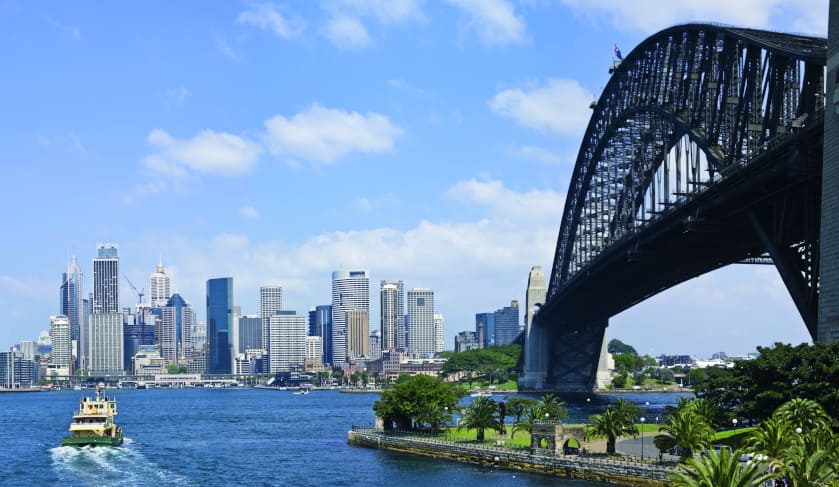Investor stories: Where to buy investment properties in Sydney?
Investor Chris Gray has successfully built a 14-property portfolio, focusing mainly on the ‘blue-chip, medium-price, secondhand market’. How do investors find these markets in Sydney?

Over the years, Mr Gray has accumulated several real estate assets across Australia and the United Kingdom, ultimately building a portfolio that is currently valued at $15 million.
Through it all, he has stuck with a strategy that he started using when he was a 22-year-old budding investor.
According to him: “I started in the UK. I lived in a good area and a nice suburb and my philosophy always was: If you rent to people with good jobs, they will always pay the rent because they don’t want their boss finding out that they haven’t paid the rent. Really, really simple philosophy.”
“I guess I just fit my strategy into that demographic and really tried to understand that demographic. It just carried on… I actually still have the same strategy that I had when I was 22 and I knew nothing.”
The investor continues to invest in what he describes as ‘blue chip, medium-price, secondhand’ property markets where most of the demand is coming from his targeted consumers.
“I’m trying different strategies every now and then… but my main portfolio remains to be a ‘buy and hold blue-chip’ portfolio,” Mr Gray highlighted.
What is ‘blue chip’?
‘Blue chip’ in real estate generally refers to property types or investment areas that have consistently strong yields and steady, long-term capital growth.
Among the growth drivers present in blue chip areas are population growth, infrastructure and government investment and employment opportunities and diversity. As such, they are typically surrounded by abundant public transport, community facilities and a rich cultural, restaurant and entertainment scene.
While usually more expensive than other investment areas, blue chip areas are often worth the hefty investment as they have less risk compared to other locations.
Central business districts such as Sydney, Melbourne, Brisbane and Perth are traditionally deemed as blue chip areas, and while this notion may hold true, there could be exceptions.
For Mr Gray, the safest bet would be areas within five to 15 kilometres from the CBD.
He explained: “I thought to avoid the CBD because there’s no limit of supply there. You can keep building all these big towers, but most Australians don’t want to live in a tower. So I’m going to that five to 10, maybe 15, kilometres from the CBD, focusing on properties within the three-story height limit.”
“There’s not too much supply of property there and that’s where all the young professionals that earn $100,000 to $200,000 would want to live because it's by the beach or the harbour or cafés – all the good lifestyle stuff.”
“In Sydney, it’s the Bondis, the Manleys, the Balmains… where property is never cheap. You’ve got to pay a fair price to get a steady market. ”
Most investors who would want to break into blue chip property markets will have to deal with negatively geared assets at the onset, according to Mr Gray.
However, since there is usually minimal risk in these markets, investors can be confident that they won’t be hit by any sudden significant drop in property values.
“Ideally, I’m just after that doubling every seven, 10 or 12 years…. Every time I buy, I just think, ‘In 10 or 20 years, is it going to be worth more money?’”
Buying blue chip
As investing in blue chip markets entail a bigger expense, investors will also be in larger debt, thus requiring a significant borrowing power and good serviceability.
Due to the high financial demand, a lot of investors fail to break into these markets, which means that there is typically less competition for investment properties in these areas.
However, Mr Gray reminded investors who can afford to buy in these markets to avoid being too complacent.
He said: “Sure, 90 to 95 per cent of Australians probably can’t afford it, but they’re still battling against that five to 10 per cent. Some of them are going to be homeowners, some of them are investors.”
Buying properties in blue chip areas could be hard, mainly due to their financial requirements, but Mr Gray reminded his fellow investors that it’s not the only good option in the property market.
While this strategy has worked for him for years, at the end of the day, good investment comes down to finding a strategy that will fit the investor’s personal goals, capabilities and limitations.
“There’s a million strategies and there are pros and cons for each of them. There’s nothing wrong with buying somewhere else, even in regional Australia. In fact, there are people that are making 20 per cent-growth in these areas at the moment.”
“There are other places in Australia where you could be making a fortune. The difference lies in understanding the area… being an expert in that area,” Mr Gray concluded.
Tune in to Chris Gray's episode on The Smart Property Investment Show to know more about the secrets to succeeding in today's property markets.
